After beginning his career in the Ilves Tampere junior system, including making his international debut at the European Junior Championships for Finland in 1982,
Raimo Helminen made his debut their senior team in the Finnish SM-liiga for the 1982-83 season with 31 games while he split his time with the junior team that season.
For 1983-84, Helminen, born on this date in 1964, won a silver medal at the World Junior tournament in 1984 and just one month later he made his Olympic debut in Sarajevo, Yugoslavia where the 19 year old appeared in six games, scoring 2 points.
Helminen with Ilves in 1983-84
Helminen finished third in league scoring for Ilves with 21 goals and a career best 57 points in 36 games in 1984-85 as the club won their first league championship in their history. He then made his debut at the 1985 World Championships where he continued his offensive output with 4 goals and 9 points in 10 games.
Helminen had been drafted by the New York Rangers in 1984 and moved to the NHL for the 1985-86 season, appearing in 66 games, scoring 10 goals and 40 points as a rookie. He was back with the Rangers for the 1986-87 season, but things did not go nearly as well, as he only produced 6 points in 21 games and spent time with New Haven in the AHL before a late season trade saw him sent to the Minnesota North Stars for the final 6 games of the season.
New York Ranger Raimo Helminen
Before the next season began, Helminen was back on the international stage, playing for Finland in the 1987 Canada Cup tournament. He was back in Tampere with Ilves, racking up 43 points in 31 games, including 20 goals. He also appeared in his second Olympics, scoring 10 points in 7 games as Finland won their first ever medal with a silver in Calgary.
Helminen while playing for Finland in the late 1980's
Note the green gloves from Ilves
He gave the NHL another try in 1988-89, this time with the New York Islanders, but his play was hampered by back problems. He would total 24 NHL games that season and another 16 with the Springfield Indians of the AHL, where he averaged a point per game.
For 1989-90, he moved to Malmö IF in the Swedish second division, where he starred with 26 goals and 56 points in 29 games to help Malmö earn a promotion to the Swedish Elitserien for the following season.
Helminen would play the next six seasons for Malmö, which included becoming the first foreign born player to win the Swedish scoring title in 1993, with 42 points in 40 games, and winning a league championship in 1992 and again in 1994, a season during which he scored 20 goals and 54 points in 38 games.
Helminen during his time in Sweden with Malmö
During this time period Helminen played in his third and fourth Olympics in 1992 and again 1994, earning a bronze medal as well as playing in the World Championships in 1992 (silver) and 1994 (silver). He was also a member of the first Finnish World Championship winning team in 1995 when the Finns defeated the Swedes in Sweden, triggering joyous celebrations back home in Finland. Helminen contributed 8 points in 8 games on his way to the gold medal.
Helminen skates away from a sprawling American goaltender
Garth Snow during the 1994 Olympics
1996 was also a busy year for him internationally, as he participated in both the World Championships in the spring and then the inaugural World Cup of Hockey that fall prior to returning to Tampere to play for Ilves from 1996-97 onward.
Helminen back with Ilves
He was named Player of the Year in 1998 and named team captain in 1999, a position he would hold through the remainder of his long career. He continued to score at a high pace, reaching 50 points twice and topped 40 five times over the next eight seasons, an impressive feat considering the shorter Finnish season, having never played more than 56 games in any season. During his final season of play in 2007-08, he was the oldest player in the league at 44 years of age.
Helminen during his retirement ceremony
His international career also continued to rack up successes as the Finns were now a nation to be reckoned with. Helminen would play in the 1997 World Championships, the 1998 Olympics (bronze), the 1998 World Championships (silver), the 1999 (silver), 2000 (bronze), 2001 (silver) and 2002 Olympics in Salt Lake City. The 2002 Olympics were Helminen's record sixth Olympic Games.
Helminen battles Mats Sundin of Sweden
during the 1998 World Championships
That fall he would play in his 11th and final World Championships to conclude his full international career with one World Championship gold, seven silver (one World Junior, five World Championship and one Olympic) and three bronze medals, two Olympic and one at the World Championship.
He would continue to play for Ilves until the 2007-08 season before announcing his retirement after 751 games, 161 goal and 420 assists for 581 points in Finland as well as 226 games and 199 points in Sweden's Elitserien and another 117 games and 59 points in the NHL.
Helminen holds the record for the most international games at 331, scoring 52 goals and 207 points, with his 155 assists and 207 points being Finnish career records internationally.
Helminen was recognized when he set the
record for most international appearances
His number 41 was retired by Ilves and Helminen was inducted into the IIHF Hall of Fame in 2012.
Ilves honored Helminen by retiring his #41
Today's featured jersey is a 1996 Finland National Team Raimo Helminen jersey from the inaugural World Cup of Hockey. This attractive "waving flag" style of jersey marked Nike's entry into being the jersey supplier for the IIHF, which continues to this day. This style was worn through the 1997 World Championships until new styles were debuted for the 1998 Olympics.

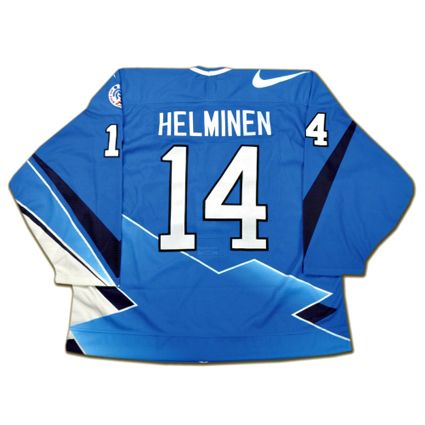
Bonus jersey: Today's bonus jersey is a
1987-88 Minnesota North Stars Dave Ganger jersey which was previously worn by Helminen during his six games with the North Stars at the end of the 1986-87 season. During that time period a jersey with so much life remaining it in would generally be reused after simply swapping one player's nameplate for another, giving some jerseys an interesting but sometimes difficult to prove history.
Occasionally, jerseys would also undergo number changes as well, further clouding it's past and requiring nearly forensic examination for evidence of changes in customization to suggest previous wearers.
Here is a look at the career if Helminen followed by an interview with him in Finnish.

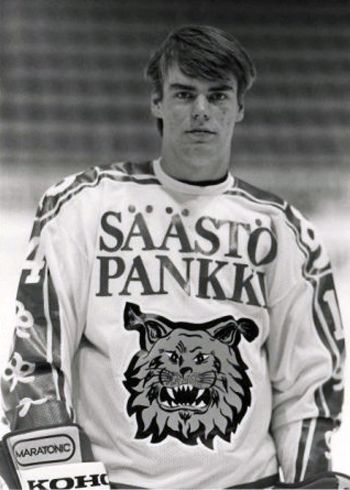
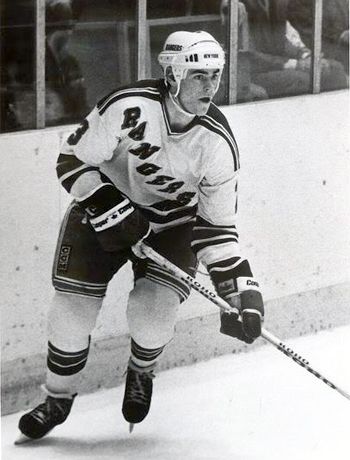


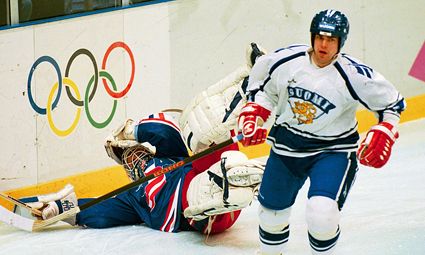
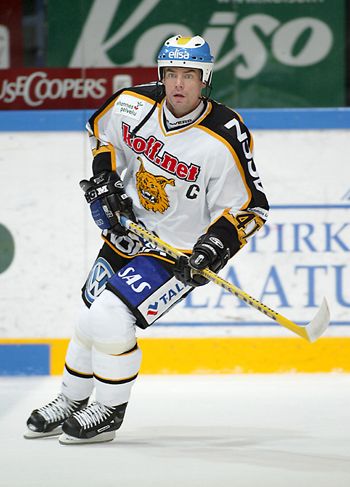
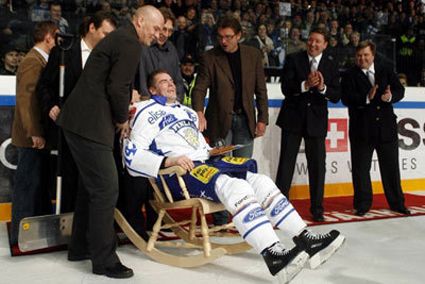
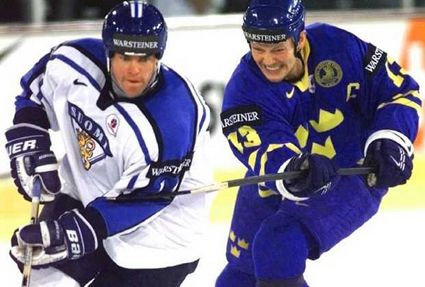
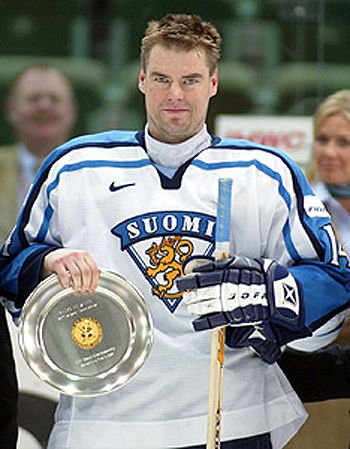
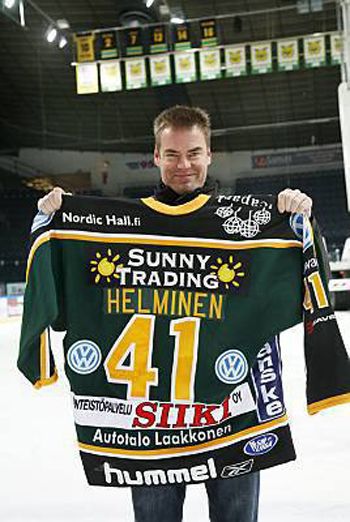



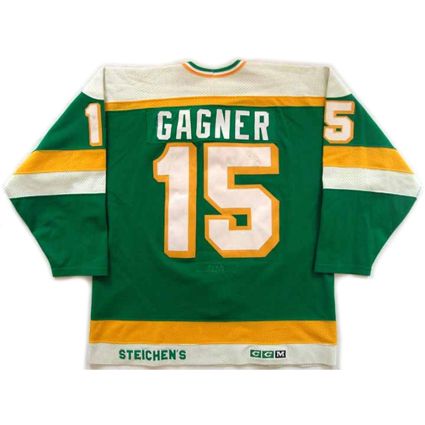










No comments:
Post a Comment
We welcome and encourage genuine comments and corrections from our readers. Please no spam. It will not be approved and never seen.